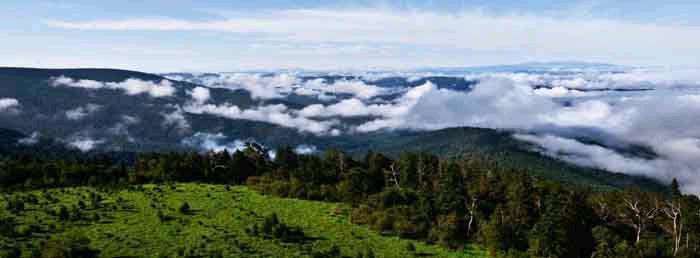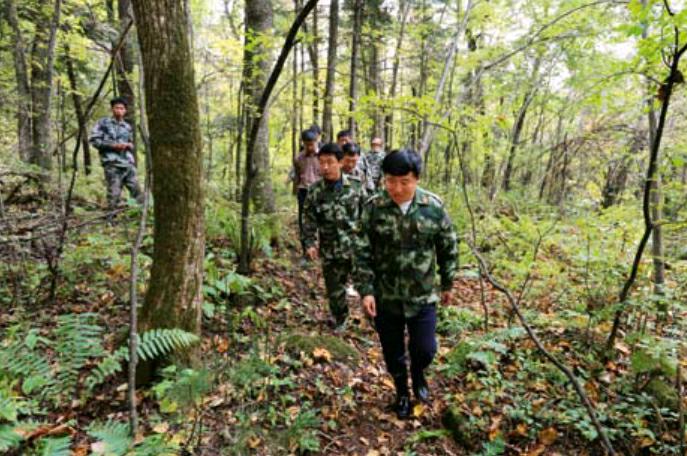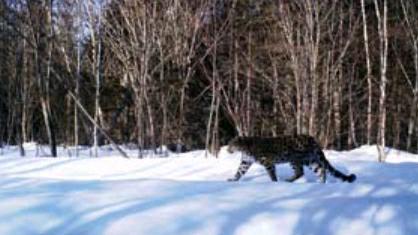Return of the Tiger
By+Zi+Mei
At 4 a.m. one August morning, Ms. Ba drove her three-wheeled motorbike to “patrol” her cornfield in Liangshui Village, Yingan County, Hunchun City, Jilin Province of Northeastern China. She set off firecrackers there to scare wild boar away; the animal often prowled her fields to gnaw on the crop.
Since 2008, Hunchun City, dubbed“the home of the Manchurian tiger,” has begun to implement the “strictest-ever”management of forest and biological resources. Hunting is forbidden so that villagers can only frighten the animals away and cannot hurt them. After a decade, the population of wild animals in the territory, including tigers and leopards, has seen gradual growth. On September 12, 2017, the Jilin Branch of the Pilot National Park Administration for Manchurian Tigers and Leopards was founded.
Manchurian Tiger and Leopard Rescue
The Manchurian tiger, also known as the Siberian tiger, is found in Russias FarEast and Chinas northeastern region. Due to destroyed habitat and human poaching, the population of wild Manchurian tiger dropped dramatically to 200 worldwide in the late 1970s. Between 1998 to 1999, experts from China, Russia and the United States jointly conducted research that showed only 12 to 16 tigers and 7 to 12 leopards existed in all of northeastern China.
A border city straddling Russia and North Korea, Hunchun serves as an ecological corridor for Manchurian tigers to migrate back and forth between China and Russia, making the city the most densely populated area with the species. In 2001, to rescue the big cats and their habitats, Hunchun Nature Reserve was set up. Covering 1,087 square kilometers, it was the first of its kind in China and upgraded to national level in 2005.
When the reserve was first established, most rangers had no experience protecting the animal. Without any high-tech equipment, they still conducted field work even in winters as cold as 30 degrees below zero. Carrying food and GPS, the rangers would head into the forest from 7 a.m. and return at dusk after hiking hills and crossing rivers. For special programs, they would spend dozens of days in the forest, eating bread, drinking spring water and sleeping in farmers sheds.
Their efforts proved worthwhile. Monitors show that at present, in Jilin Provinces territory reside five tiger families with a total of 27 tigers alongside 42 leopards-a great jump compared to the 1990s.endprint
“Tigers are the top of food chain,” explains Chu Xinwen, head of Publicity and Education Center with Hunchun Forestry Bureau. “The presence of tigers indicates that a local food chain is intact. The recovering population of tigers and leopards demonstrates that the local biological environment is moving towards a virtuous circle, with wild animals and plants becoming more diverse.”
Tiger Crossing
A road connects Hunchun to Dongning City of Heilongjiang Province. To improve transportation, Jilin Province had planned to construct a highway that would have crossed an area densely populated by Manchurian tigers and leopards, and would have impacted their migration.
“The road would have cut straight across the tigers habitat,” explains Chu.“Populations would have become isolated by the road, making it difficult with them to mate with outsiders, which severely impacts population growth and genetic diversity.” Jilins Provincial Government ended up cancelling the project and instead renovated the existing road. The same thing happened to the planned HunchunVladivostok highway, which took a detour from its original route.
Considering protection of wild animals before launching any project has become routine for Hunchun authorities. Hunchun banned hunting in 1996 and commercial logging in 2015. Those measures have contributed to the fast growth of animal and forest resources, filling the gaps in the food chain needed to support big populations of wild Manchurian tigers and leopards.
To design a long-term mechanism to protect the areas big cats, Jilin issued Notice for Further Protection of Manchurian Tigers and Leopards, stipulating that any construction work around the area inhabited by tigers and leopards or ecological corridor had to be approved by experts from forestry and environment administrations, who would analyze the potential effects of any project on the animals survival, reproduction and migration.
Pilot National Park
Statistics from China and Russia estimate that at least 35 tigers and 70 leopards are active around Hunchun and the neighboring Russian territory. However, the whole area covers only 4,000 square kilometers and its resource capacity can hardly meet the demands of the large animals, each of which needs 400 to 500 square kilometers to move around. To better protect the two species and provide enough room for their survival, the State Forestry Administration of China set up a pilot national park, with the Hunchun Nature Reserve at its core.endprint
According to the blueprint, the Pilot National Park for Manchurian Tigers and Leopards will cover 14,600 square kilometers, crossing Jilin and Heilongjiang Provinces. The area in Jilin accounts for 71 percent of the total. “It is the region with the most tigers and leopards,” says Wang Yue, head of Hunchun Forestry Bureau and Hunchun Nature Reserve Administration.“It is the most important area for the animals residence and reproduction. Considering the current situation of the two catshabitats in Hunchun and Wangqing cities, the establishment of a pilot national park will likely strengthen connectivity, coordination and intactness of the two specieshabitats, and consequently push systemic protection of tigers and leopards and stabilize and grow their populations.”
“The pilot national park also addresses the countrys need to innovate protection modes for wild animals and do it in a scientific way,” Wang adds.
In recent years, ranger work has been upgraded from routine patrol to digital management. The team is equipped with GPS, infrared cameras, drones and SMART patrol systems, which produce thorough analyses. Hunchun Forestry Bureau maintains strong relations and frequent cooperation with Wildlife Conservation Society(WSC), World Wildlife Fund (WWF) and Rare Conservation (RARE). The bureau has signed agreements with Russian Leopard Park to establish a long-term cooperative mechanism on joint research, monitoring, poaching, publicity and education. endprint
endprint
- China Pictorial的其它文章
- Xi Jinping in Zhengding:Innovating Economic Development
- Xi Jinpingin Fujian:Great Care and Pragmatic Reform for the People
- Xi Jinpingin Zhejiang:Taking the Lead through Solid Work
- Xi Jinpingin Shanghai:Targeting Long-term Development and Defining Direction
- Feng Cuiling:A Breath of Fresh Air
- Su Wenzhu: Reading Yesterday Today

